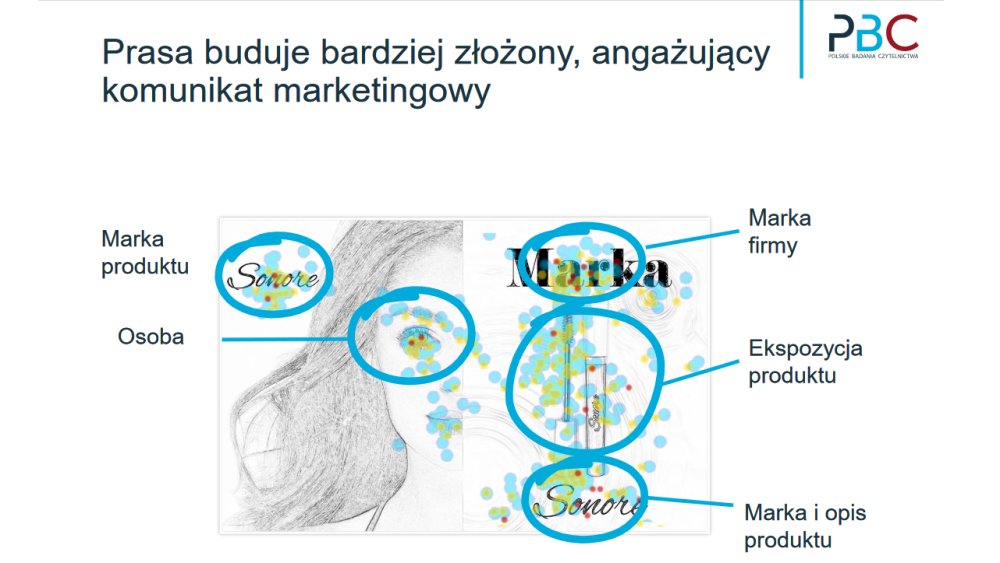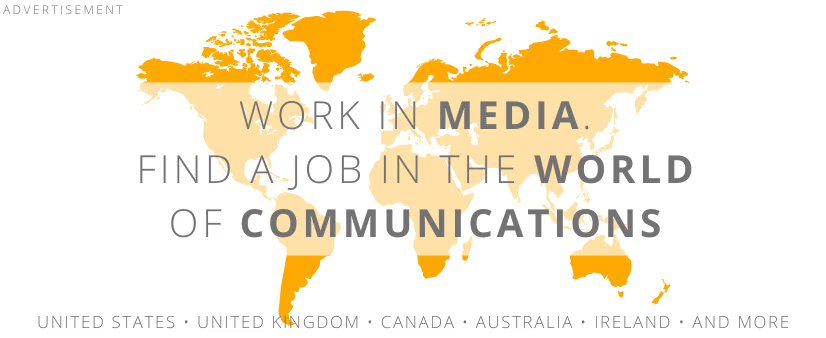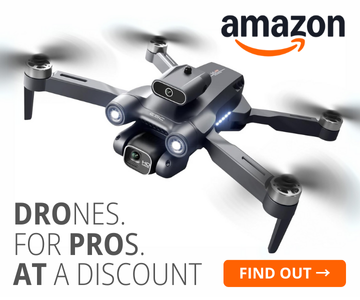 source: PBC
source: PBCThe study, conducted by GFK and Kantar Millward Brown, used eye-tracking technology on 300 respondents, both regular print readers and non-readers. It analyzed ad reception in:
- daily newspapers
- and luxury women’s magazines.
The study focused on so-called long fixations, or gazes at an ad lasting more than 180 milliseconds. It also measured emotional engagement, indicated by pupil dilation.
- The number of fixations (over 180 ms) on contextual print ads is 67% higher,
- the average gaze duration on contextual ads is 30% longer than on standard ads,
- emotional engagement with contextual ads is 44% higher.
The results also showed that regular readers engage more with ad content than non-readers. However, the study’s main conclusion is the same for both groups: contextual advertising in print media is more effective, and print itself conveys a more complex marketing message.
The study also compared print advertising results with those of online ads. Both print readers and non-readers were more receptive to print ads.
Number of Fixations on Ads
- 4.1 - print ad (readers)
- 3.7 - print ad (non-readers)
- 2.9 - online ad (readers)
- 2.8 - online ad (non-readers)
- The difference of one fixation is a significant difference - emphasizes Waldemar Izdebski, president of Polskie Badania Czytelnictwa, commenting on the study results on the PBC website. - Print advertising allows readers to notice one more element of the ad.
More details about the study results are available on the Polskie Badania Czytelnictwa website.
COMMERCIAL BREAK
New articles in section Marketing and PR
Dance in the media mirror. Between culture, business and viral fame
KFi
Over 78,000 media pieces, 1.6 billion potential views, and 197,500 social media mentions-dance in Poland is no longer niche. With a combined media value exceeding PLN 800 million, it now outperforms MMA, handball, and hockey.
PR in Poland. Ranking of the largest public relations agencies 2025
KFi
The smallest teams often generate the most publications, and agencies outside Warsaw are increasingly capturing media attention. This unexpected distribution of power is one of the key findings from the 2025 PR Agency Ranking in Poland, developed by Widoczni and IMM.
Connected TV and borderless advertising. The ID5 report
KFi
Viewers are moving away from cable TV. And they are doing it en masse. Already 86% of Europeans watch content via Connected TV and global ad spend in this segment is set to double by 2028. The industry is undergoing a communication revolution.
See articles on a similar topic:
Poles do not forgive brands' mistakes. Armatis Customer Experience Index
Krzysztof Fiedorek
As many as 57.2% of Poles are willing to abandon a brand after one bad customer service experience. This result is similar to what was noted in the United States. Every third Polish customer prefers phone contact with a consultant, though over 13 percent now prefer chat.
Modern Mobile Communication. How Companies Build Loyalty by Phone
KFi
Companies can no longer treat mobile communication channels as a side element of their operations. An effective mobile strategy is becoming a cornerstone of customer contact, a tool for improving service, and a way to optimize internal processes. If they know how to use it.
Online advertising 2024/2025 report by IAB Poland
KFi
Online ads now consume 57% of all budgets. Companies spent 1.62 billion PLN on video formats alone. After leaner years, the numbers are rising sharply. Digital advertising grew by 20% in a year. Traditional formats are slowly fading.
LabOOOratorium. Education, Business and Win-Win-Win Cooperation
fundacja OOO
How to combine diversifying activities in kindergartens and schools with setting innovative trends in education and social engagement of businesses? The educational foundation Ogólnopolski Operator Oświaty and the company Musicon show how to do it right.





























